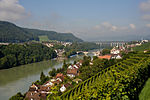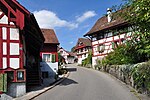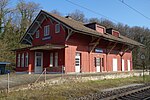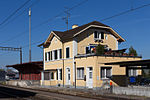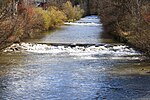Eglisau railway station
Pages with no open date in Infobox stationRailway stations in the canton of ZürichSwiss Federal Railways stationsSwiss railway station stubs

Eglisau railway station (German: Bahnhof Eglisau) is a railway station in the Swiss canton of Zurich and municipality of Eglisau. The station is located on the Winterthur to Koblenz line, at that line's junction with the Eglisau to Neuhausen line. Both lines are owned by Swiss Federal Railways. It is served by Zürich S-Bahn lines S9, between Zürich and Schaffhausen, and S36, between Bülach and Koblenz.The railway crosses the Eglisau railway bridge over the Rhine, between Eglisau and the next station, Hüntwangen-Wil on the Eglisau to Neuhausen line.
Excerpt from the Wikipedia article Eglisau railway station (License: CC BY-SA 3.0, Authors, Images).Eglisau railway station
Bahnhofstrasse,
Geographical coordinates (GPS) Address Nearby Places Show on map
Geographical coordinates (GPS)
| Latitude | Longitude |
|---|---|
| N 47.572388888889 ° | E 8.5166111111111 ° |
Address
Bahnhofstrasse 11
8193
Zurich, Switzerland
Open on Google Maps


